This Unicorn Tapestries art history lesson captures the glittering, mystical quality of medieval art for elementary-aged students and homeschoolers.
With key vocabulary terms, a storytime-style history lesson, and a clever, beautiful art project, it’s the perfect introduction to this stunning, kid-friendly little slice of art history.
Makes a perfect transition lesson from ancient art history to Renaissance art!
What were the Unicorn Tapestries?
The Unicorn Tapestries, also known as “The Hunt of the Unicorn,” are a set of seven medieval tapestries that depict the capture and mystical journey of a unicorn. Created in the late 15th century, scholars consider the unicorn tapestries among the greatest masterpieces of Gothic art.
The precise origin of the Unicorn Tapestries is uncertain. However, historians think they originated in the Southern Netherlands (Flanders), an area renowned for its skilled textile production during the Middle Ages.
The tapestries are large and intricate, measuring around 12 feet in height and 14 feet in width each. Woven from wool and silk threads, the detailed scenes create a rich narrative. The narrative unfolds across the seven tapestries, each contributing to the overall story.
- The Hunters Enter the Woods: This tapestry introduces the viewer to the quest for the unicorn, as hunters and hounds venture into a dense forest.
- The Unicorn at the Fountain: The unicorn rests by a fountain, its magical horn visible in the tranquil setting.
- Unicorn Attacked: In this dramatic scene, the unicorn faces aggression from a group of hunters.
- The Unicorn Defends Itself: The unicorn bravely fights back against its attackers, showcasing strength and resilience.
- The Unicorn Surrenders to a Maiden: A maiden appears in the narrative, approaching the subdued unicorn with a sense of gentleness.
- The Maiden with the Unicorn: This tapestry focuses on the maiden and the unicorn, suggesting a special connection between them.
- The Unicorn in Captivity: In the final tapestry, the unicorn appears in captivity. But there is an element of peace and serenity. The garden of flowers surrounding the unicorn symbolizes renewal and perhaps a form of triumphant captivity.
But . . . why?
The meaning behind the Unicorn Tapestries has been the subject of much interpretation and speculation. Some believe that the unicorn represents Christ, while others see it as a symbol of purity and virtue. The maiden in the later tapestries is often associated with the Virgin Mary, adding religious and allegorical layers to the narrative.
The Unicorn Tapestries are currently housed in The Cloisters, a branch of the Metropolitan Museum of Art in New York City. They continue to captivate art enthusiasts and historians, offering a glimpse into the medieval fascination with symbolism, storytelling, and the mysterious allure of mythical creatures.
Story Time: The Unicorn Tapestries
Feel free to copy-and-print the story below to read to littles as a story-based introduction to the Unicorn Tapestries.
Once upon a time, in a land filled with knights, castles, and mystical creatures, there were six magnificent tapestries that told a magical story. These were not just ordinary tapestries; they were the Unicorn Tapestries, each weaving a tale of mystery and wonder. Let’s embark on a journey through time and discover the enchanting history behind these captivating works of art.
Our story begins in the late Middle Ages, around the early 1500s, in the southern part of Europe, where skilled weavers in the Netherlands created these extraordinary tapestries. Imagine a world where brave knights and fair maidens roamed, and fantastical creatures roared in the shadows.
The Unicorn Tapestries were not just beautiful decorations; they were crafted to tell a story that was both captivating and full of symbolism. The six tapestries are believed to have been made for a wealthy family, the Le Viste family, and they were a symbol of wealth, power, and a touch of magic.
The first tapestry in our magical journey is called “The Hunters Enter the Woods.” In this enchanting scene, gallant hunters, accompanied by their loyal dogs, set out on a quest to capture the elusive unicorn. The forest is thick with trees, and the air is filled with a sense of anticipation. Can you hear the rustle of leaves and the distant neigh of the unicorn?
As our adventure continues, we come across “The Unicorn at the Fountain.” Here, the unicorn rests peacefully by a fountain, its magical horn sparkling in the gentle sunlight. The scene is serene, and the unicorn, though captured, seems unharmed. What secrets does the fountain hold, and why is the unicorn so important?
In “The Unicorn is Attacked,” the plot thickens as the unicorn faces a group of fierce hunters. But wait, why are they attacking this majestic creature? Could there be more to the story than meets the eye? The tapestry leaves us with questions, encouraging us to use our imagination and creativity to fill in the missing pieces.
“The Unicorn Defends Itself” showcases the unicorn fighting back, demonstrating its strength and courage. Children, just like the brave unicorn, can learn that even in challenging situations, standing up for what is right is a noble and valiant choice.
Our penultimate tapestry, “The Unicorn Surrenders to a Maiden,” adds a surprising twist to the tale. A gentle maiden approaches the defeated unicorn, placing a calming hand on its flank. Why would a maiden be involved in this magical adventure, and what role does she play in the unicorn’s story?
Finally, in “The Unicorn in Captivity,” the last tapestry, we see the unicorn once again in captivity. However, this time, there is a sense of peace and harmony. The unicorn is surrounded by a garden of blooming flowers, symbolizing renewal and perhaps a hint of freedom.
And so, our journey through the Unicorn Tapestries comes to an end. These magnificent works of art continue to captivate the hearts and imaginations of people, young and old. The tale they tell teaches us about bravery, kindness, and the magic that exists in the world around us. As you gaze upon these beautiful tapestries, let your imagination soar and create your own magical stories inspired by the enchanting world of unicorns.
Key Vocabulary Terms
Tapestry: A fabric wall hanging, typically woven by hand, often with intricate designs or pictorial representations. The Unicorn Tapestries are a set of woven artworks that tell a story.
Allegory: A symbolic representation or narrative where characters, events, or elements have a deeper, often moral or philosophical, meaning. The Unicorn Tapestries are allegorical, with various interpretations of their symbolism.
Flanders: A historical region in present-day Belgium, known for its significant role in the production of high-quality textiles, including the weaving of intricate tapestries like the Unicorn Tapestries.
Gothic Art: An art style that emerged in the late Middle Ages, characterized by intricate detail, a focus on religious themes, and a sense of verticality. Scholars regard the Unicorn Tapestries as masterpieces of Gothic art.
Iconography: The study or interpretation of symbols and images, especially within the context of religious art. The Unicorn Tapestries are rich in iconography, conveying symbolic meanings through their imagery.
Maiden: A young woman. In the Unicorn Tapestries, a maiden appears in several scenes, adding a mysterious and symbolic element to the narrative.
Hierarchical Composition: An artistic arrangement where the size and placement of figures reflect their importance or significance. The Unicorn Tapestries often feature hierarchical compositions, emphasizing the importance of certain characters or elements in the story.
Materials
PLEASE NOTE: I have included affiliate links below for your convenience.
–canvases (NOT art paper or construction paper)
-printed out unicorn silhouettes (google “unicorn silhouettes”) OR unicorn stencils
-spray paint
-glue
-glitter
-optional: twigs, moss, leaves, dried or faux flowers, ect.
Step 1

Cut out unicorns. The closer and more accurate the cuts, the more precise it will turn out. (Alternatively, to save time, you can also get some unicorn stencils).
Step 2
Lay the silhouettes flat the on canvas. Spray paint over the cutout and remove it to create a unicorn outline.

Step 3
Decorate with flowers, seashells, dried moss, sticks, glitter, whatever you have. So much fun and they came out so CUTE!
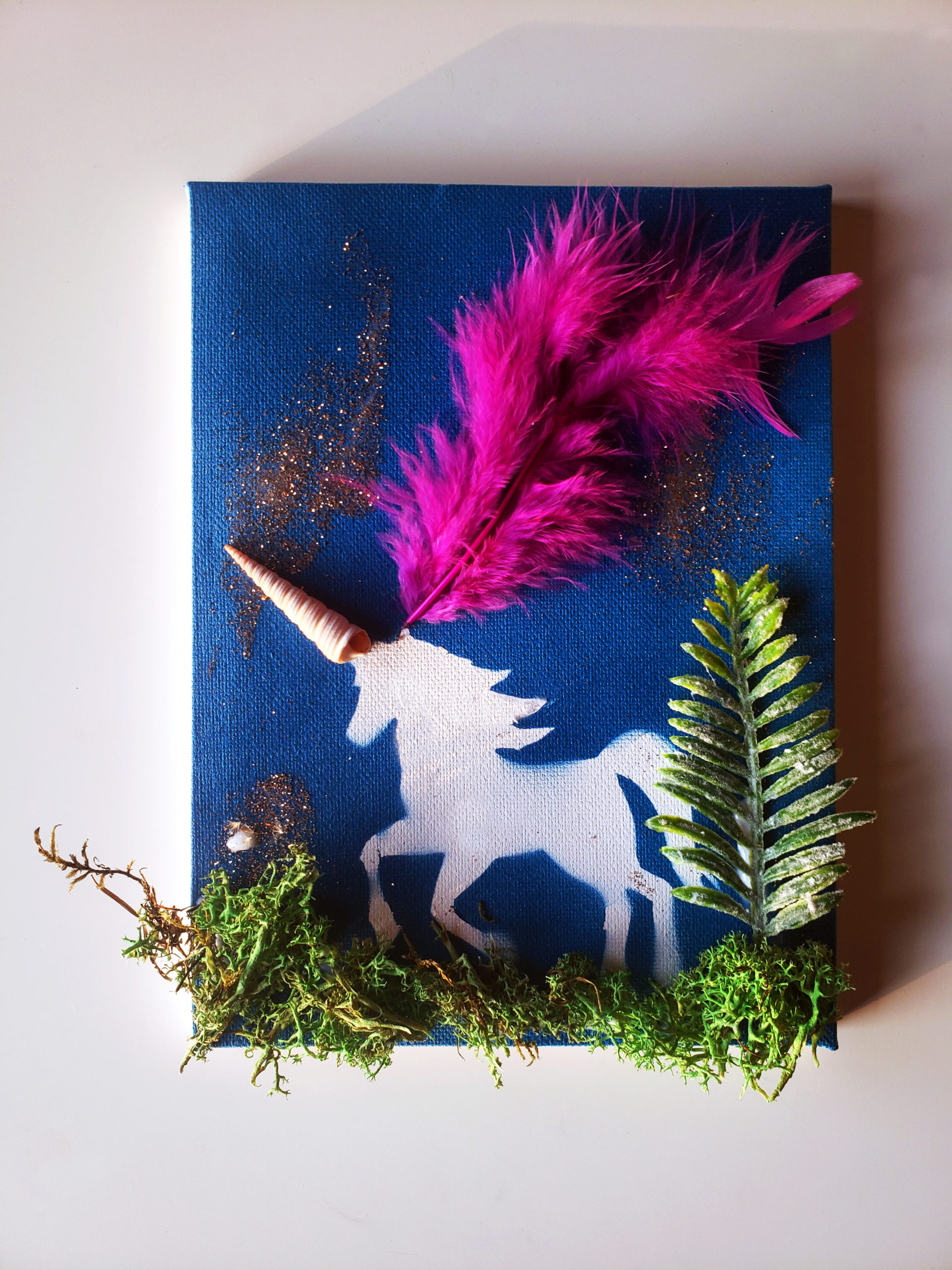
Real Classroom Examples
I love projects like these because the kids always make such unique, expressive versions. Here’s one of my favorite examples from a class when I taught this Unicorn Tapestries art history lesson to an elementary-level class.
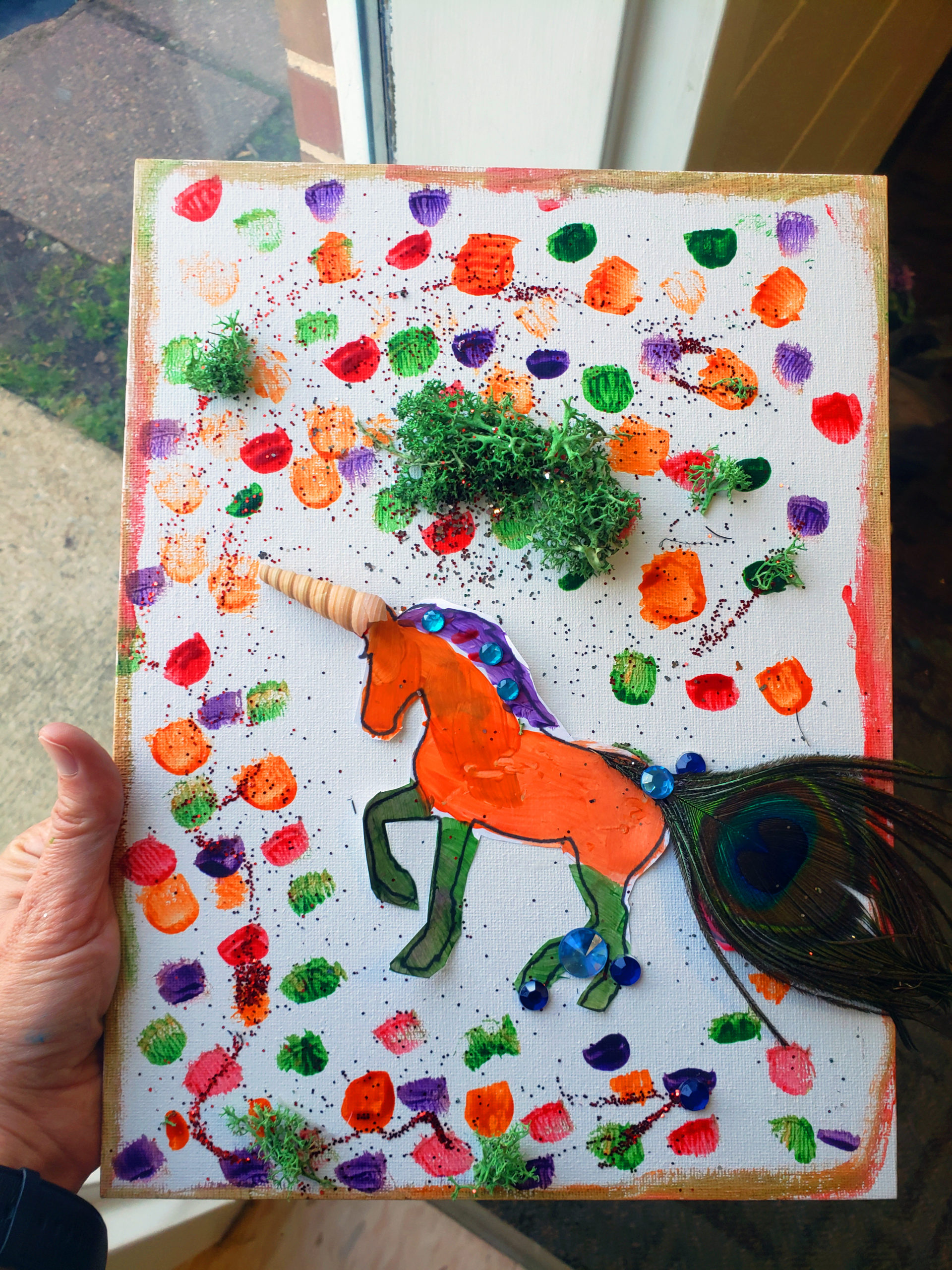
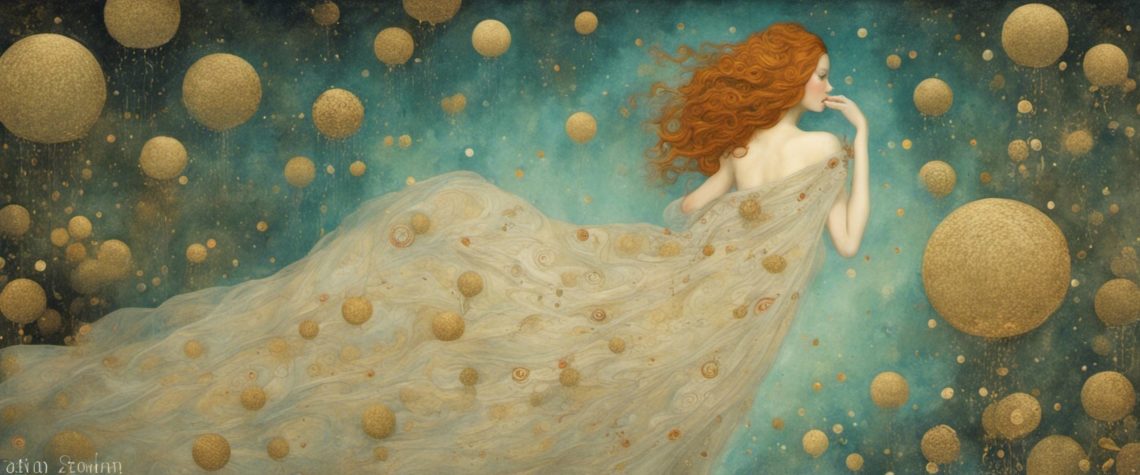
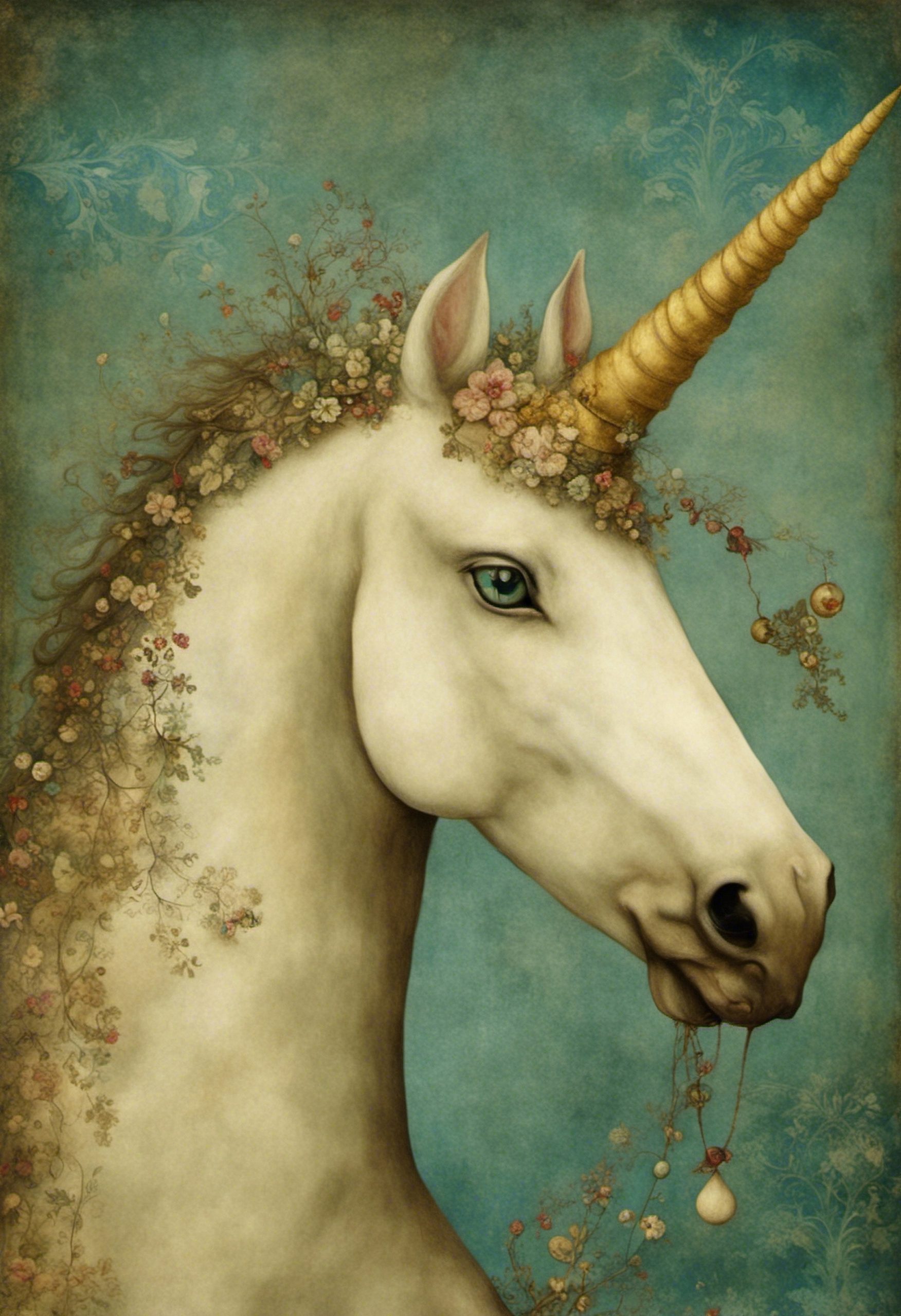
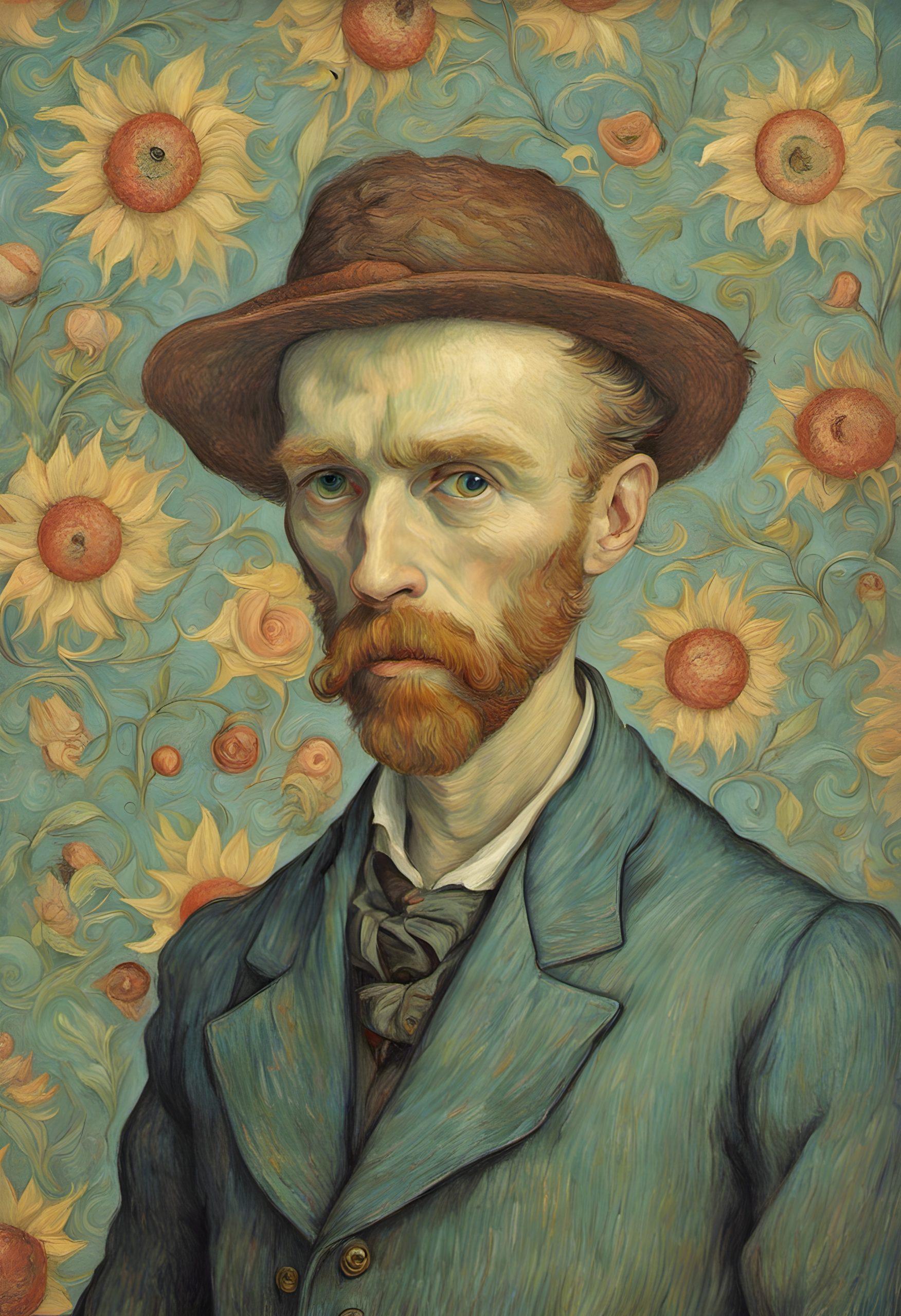
1 Comment